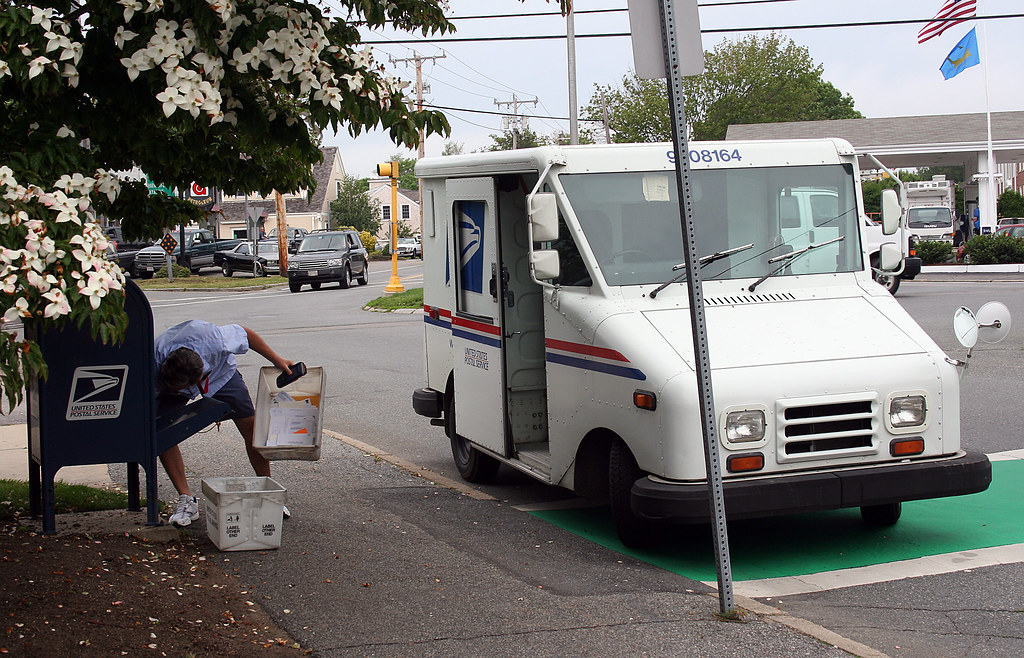Electrify the United States Postal Service
Victoria Whalen, ACE Fellow
|March 1, 2022

United States Postal Worker in Action
The US Postal Service is spending $11.3 billion on over 130,000 gas-powered vehicles, flying in the face of clean energy goals to protect the country from anthropocentric climate change consequences.
Biden Administration
Near the end of 2021, President Joe Biden signed into law a $1 trillion bipartisan infrastructure plan that focuses on protecting the country from the consequences of human-caused climate change. Some major goals outlined in the plan would be to run on carbon-zero electricity by 2030 and then net-zero greenhouse gas emissions by 2050.
However, President Biden hasn’t just stopped there. In December 2021, he released a new executive order that will use the government’s annual buying power to cut down carbon emissions to 65% by 2030. Under this order, the White House plans to spend billions of dollars on adding more clean electricity to the nation’s grid, upgrading the efficiency of 300,000 government buildings, and switching the federal fleet of 600,000 cars and trucks with electric vehicles.
One major focus of the federal fleet is the electrification of the United States Postal Service (USPS) vehicles, but the Biden administration has limited authority over the USPS because it is an independent agency.
USPS
The United States Postal Service operates about 230,000 vehicles, which is about one-third of the vehicles in the US government fleet. Since 2015, the USPS has been looking for vehicles to replace their old and dangerous mail trucks. The urgency to replace the vehicles has increased over the years as more and more USPS vehicles are bursting into flames and becoming a large fire risk.
Despite President Biden’s efforts to electrify the US postal service, USPS plans on spending $11.3 billion on newly designed gas-powered vehicles over the next decade. When the new “duck-style” design was announced in 2021, the Postmaster General stated the vehicles could either run on gasoline or electric, however, only 10% of the fleet will run on electric while the remaining 90% will run on traditional gas-powered engines. “The Postal Service’s proposal as currently crafted represents a crucial lost opportunity to more rapidly reduce the carbon footprint of one of the largest government fleets in the world.” says Vicki Arroyo, associate administrator of policy for the Environmental Protection Agency.
Major competitors of the United States Postal Service have already announced their plans to keep in line with the growing need for environmentally-conscious vehicles. Walmart and FedEx have committed to achieving all-electric fleets by 2040, while Amazon and UPS have committed to net-zero emissions by 2040 and 2050 respectively.

Electric vs. Gas Vehicles
The transportation sector is one of the largest contributors of greenhouse gas emissions in the United States and represents approximately one-third of emissions each year.
If the United States postal service were to switch to fully electrifying their fleet, they could save an estimated $4.3 billion. While the upfront cost of electric vehicles and stations is currently higher than gas-powered engines, there are many pros to switching to electric. Electric vehicles use less energy in stop-and-go traffic, due to their efficiency. Electricity is also cheaper than gas, and EVs require less maintenance, and thus lower costs than other vehicles.
On the other hand, in an environmental impact letter issued by the USPS, the Postal Service makes the claim that the opposite would be true if electric vehicles were mandatory. They also state that going fully-electric is only achievable if Congress gives more funding. However, the Environmental Protection Agency claims that the impact letter was “seriously deficient,” with underestimates of greenhouse gas emissions.
One improvement that comes with the new vehicles is the addition of air conditioning. While this is an improvement for the health of the driver, this also means that fuel efficiency will be extremely low, averaging 8.2 miles per gallon.
Want to read more? Check out the ACE Blog.
Join our Youth Action Network
More Blog Posts
Driving India towards self sufficiency and freedom from oil
India can shield itself from oil-price shocks and global pressure over Russian barrels by leaning harder into two strengths it …
Read More
Unnatural, Not Unprecedented
For two weeks, residents of Southern California endured a waking nightmare. Parents raced against time – hurrying down the driveway …
Read MoreCrafting a Vision for the Future: My Experience at LCOY USA 2024
Dry and sunny Tempe, Arizona where temperatures have been over 100 F for 113 consecutive days, delegates gathered to attend …
Read More